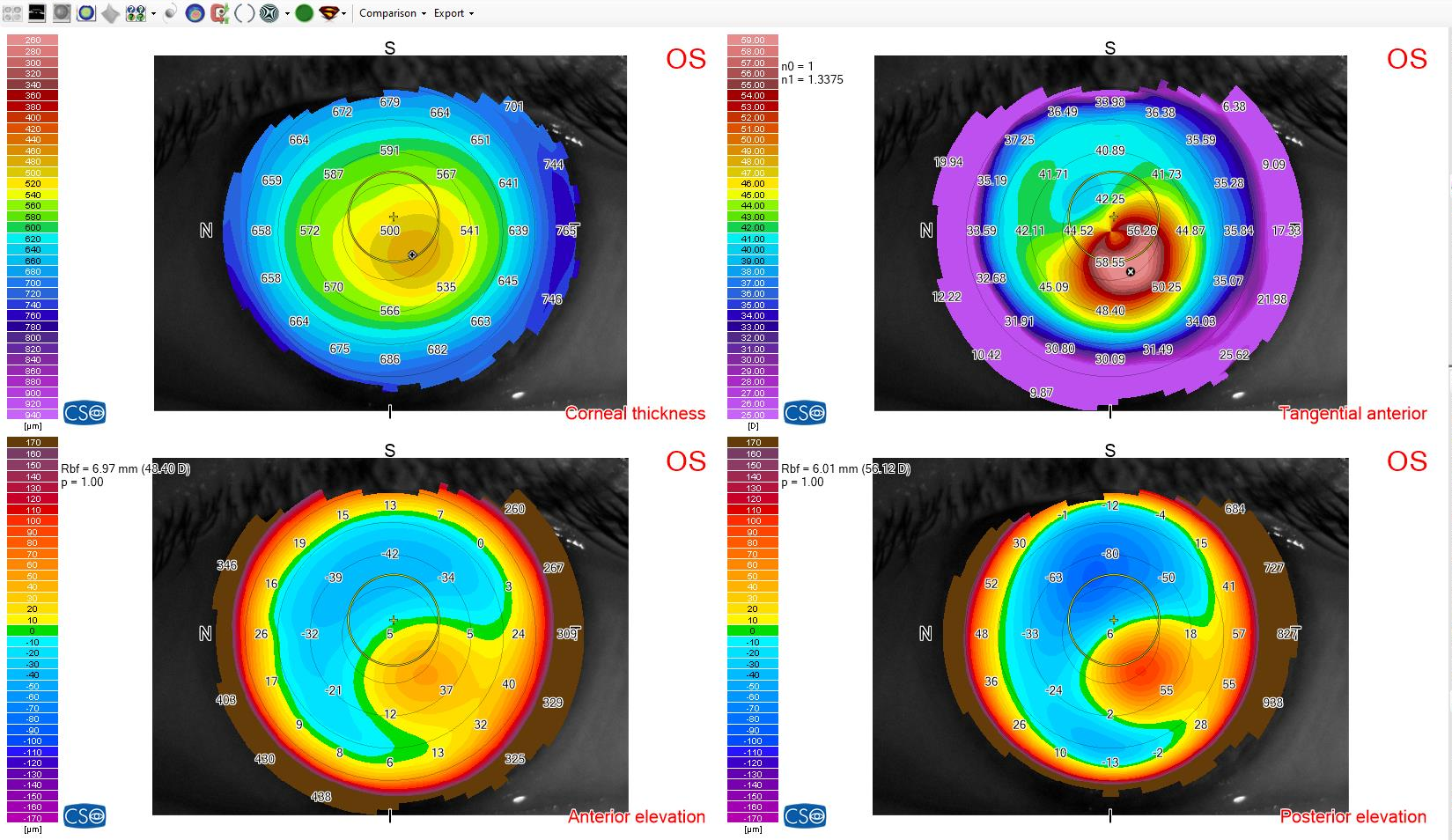Keratoconus is a change of the shape of the front of the eye called the cornea.
The cornea becomes thinner and weak, becoming cone like.
Keratoconus symptoms can appear in the childhood, late teens or early 20s.
Keratoconus may progress or may stabilise. Only progressing keratoconus needs to be treated and is worrying.

Diagnosis is done with proper history taking, vision testing and Advanced mapping of the cornea known as tomography.
Symptoms of keratoconus include fluctuation of spectacle number, increase in cylinder numbers, reduction in visual acuity, image distortion, Increase sensitivity to light and glare, frequent changes in glasses prescription and gradual vision loss.
Risk factorsincludes family history of keratoconus, allergy, high cylindrical number in glasses, Vitamin D deficiency, Thyroidand PCOS- Polycystic ovary syndrome.

There is no cure for keratoconus.
However, Corneal cross-linking procedure can halt or slows progression.
At initial stage can be corrected with glasses and speciality contact lenses (scleral lenses).

At very advance stage patients need a corneal transplant to replace the damaged cornea and improve vision.
– By Dr. Samita Moolani



